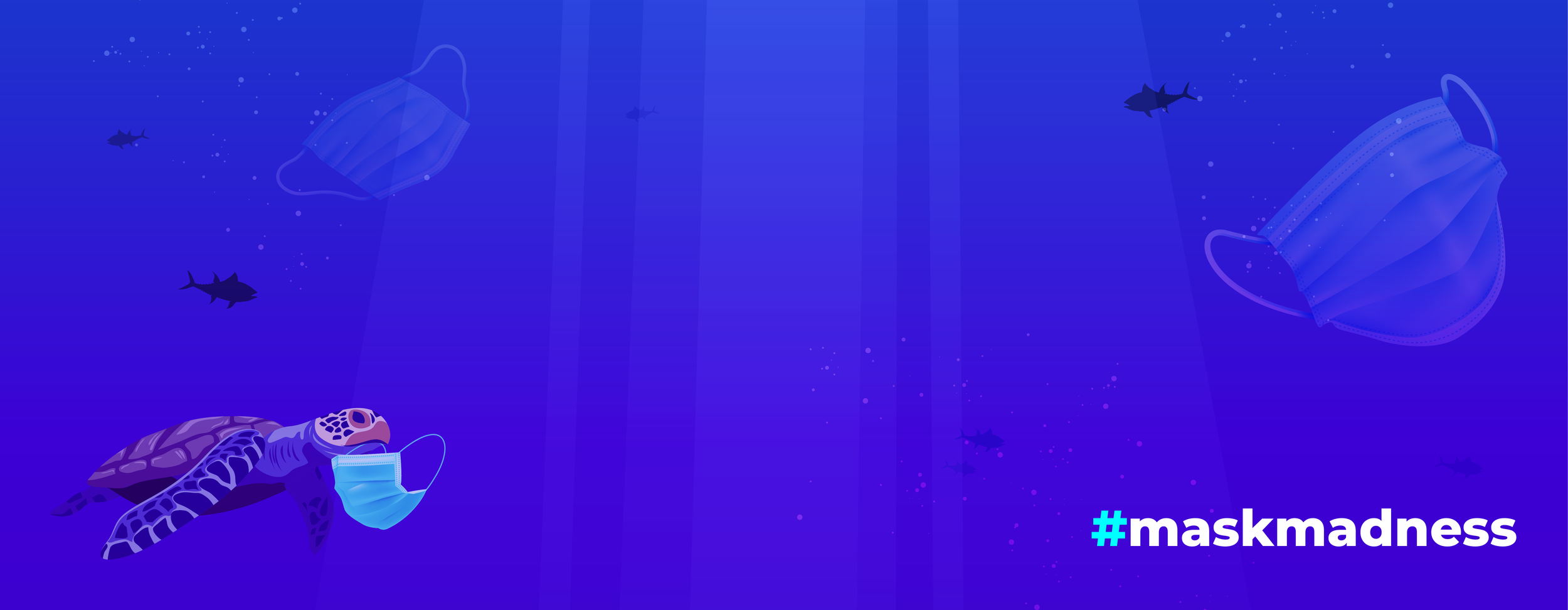Face coverings are now a legal requirement in many public spaces around the world. But even before they became compulsory as a result of the current Coronavirus pandemic, masks were causing litter problems on land and at sea.
One February beach clean in Hong Kong found 70 masks along 100 metres of shoreline, with 30 more appearing a week later. In the Mediterranean, masks have reportedly been seen floating like jellyfish.
Despite being told to use face masks, little guidance has been given on how to dispose of or recycle them safely, and as countries begin to lift lockdown restrictions, billions of masks will be needed each month globally. Without better disposal practices, an environmental disaster is looming.
The majority of masks being worn are the single-use versions, manufactured from long-lasting plastic materials. When discarded improperly, these masks can persist in the environment for decades to hundreds of years. This means they can have a number of impacts on the environment and people.
“According to some estimates, globally we are using 129 billion face masks and 65 billion plastic gloves every month”
HAZARDS TO PEOPLE, ANIMALS AND THE ENVIRONMENT
Initially, discarded masks may risk spreading coronavirus to waste collectors, litter pickers or members of the public who first come across the litter. We know that in certain conditions, the virus can survive on a plastic surgical mask for seven days.
Over the medium to long term, animals and plants are also affected. Through its sheer mass, plastic waste can smother environments and break up ecosystems. Some animals also cannot tell the difference between plastic items and their prey, subsequently choking on pieces of litter.
Even if they do not choke, animals can become malnourished as the materials fill up their stomachs but provide no nutrients. Smaller animals may also become entangled in the elastic within the masks or within gloves as they begin to break apart. Conservationists have recommended that the elastic ear pieces on masks are cut in an attempt to reduce these entanglements.
Plastics break down into smaller pieces over time. Plastics first break down into microplastics and eventually into even smaller nanoplastics. These tiny particles and fibres are often long-lived polymers that can accumulate in food chains. Just one mask can produce millions of particles, each with the potential to also carry chemicals and bacteria up the food chain, ingested by animals we consume. This can result in many serious health problems such as heart disease and cancer, due to the pollutants that plastic attracts. The toxins plastic absorbs have been linked to reproduction, developmental, behavioural, neurologic, endocrine and immunologic issues in humans, while the chemicals leached from plastic through heat, such as phthalates and bisphenol have been linked to hormone disruption, heart disease and cancer.
* Content sourced from scientific article in The Conversation: “Coronavirus face masks: an environmental disaster than might last generations”











